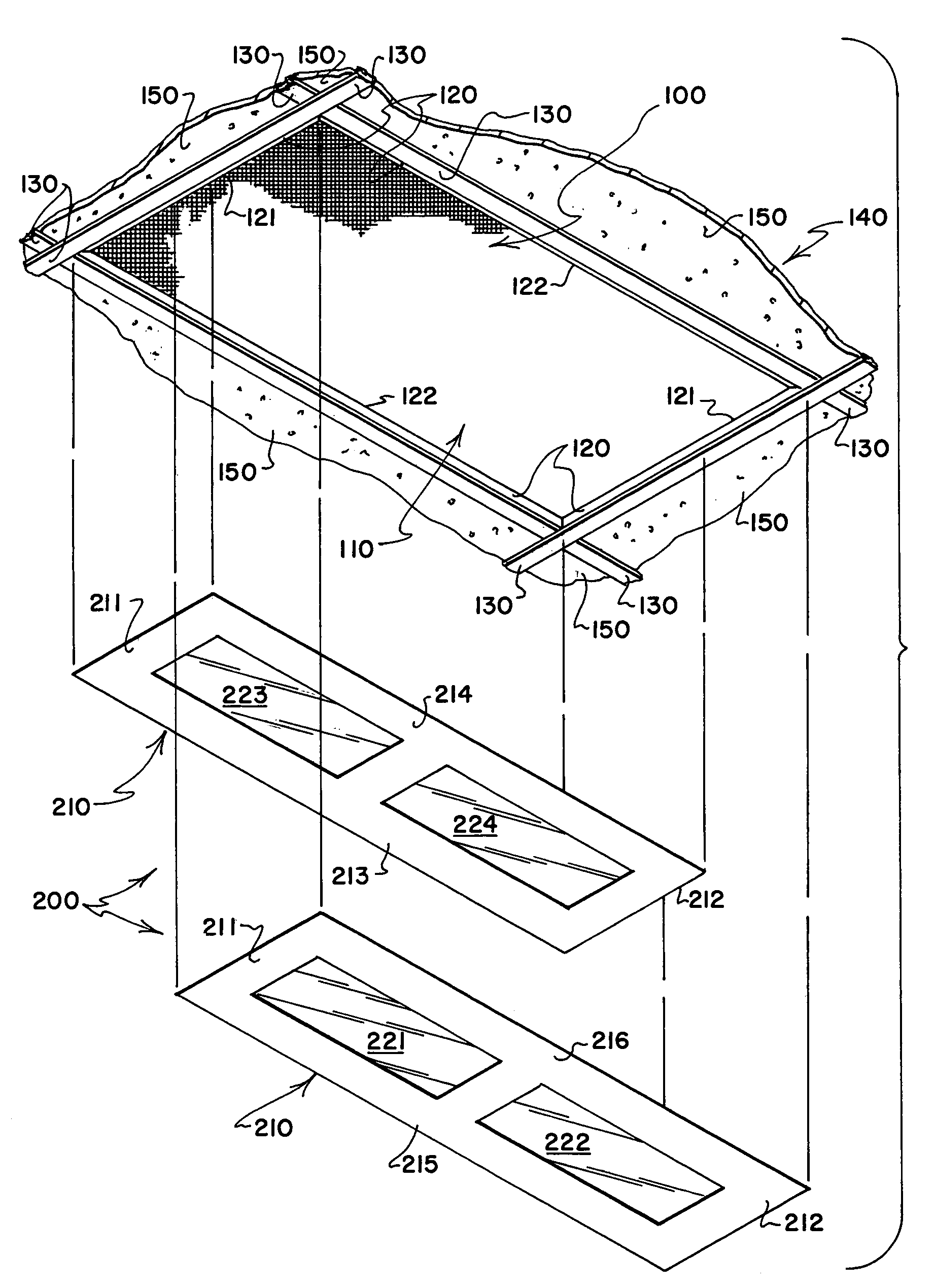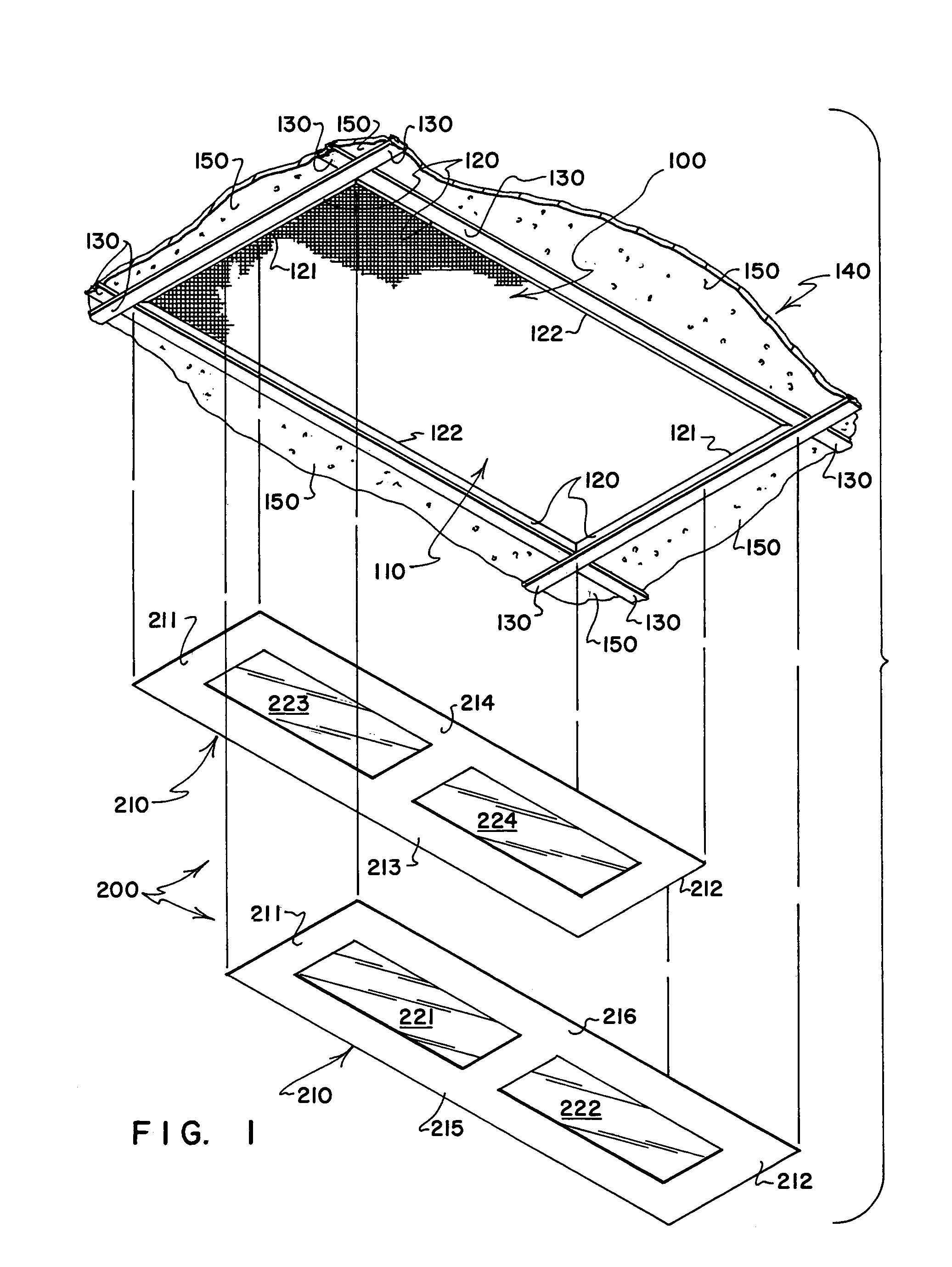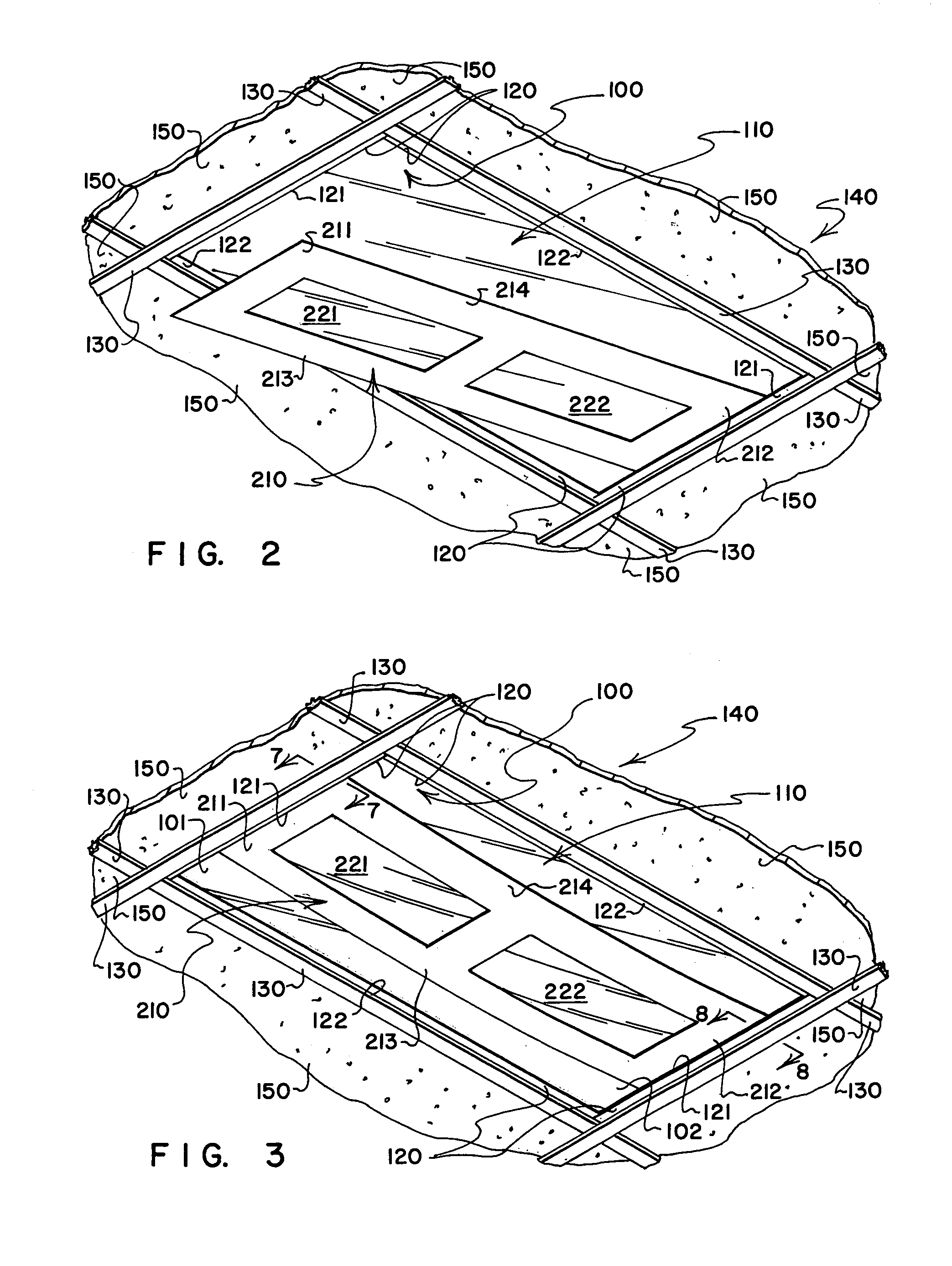Paint shields for light fixtures
- Summary
- Abstract
- Description
- Claims
- Application Information
AI Technical Summary
Benefits of technology
Problems solved by technology
Method used
Image
Examples
embodiment 300
[0045]What is intended to be illustrated by the three element paint shield embodiment 300 that is depicted in FIG. 9 is: 1) that paint shields that embody features of the present invention can be comprised of more than two paint shield elements; 2) that the paint shield elements of paint shields that embody features of the present invention need not be identical in size or in configuration; 3) that selected parts of overlapped regions of paint shields that embody features of the present invention may be designed to be folded away from a main plane occupied by major other portions of the paint shield, in this case by being folded or turned downwardly (or provided with some other form of stiffening formation that serves to stiffen the paint shield elements to prevent sag; and 4) that the stiffening formations of adjacent overlapped regions of adjacent paint shield elements may engage each other so as to assist in retaining the paint shield elements in their installed positions.
[0046]R...
embodiment 400
[0048]What is intended to be illustrated by the paint shield embodiment 400 depicted in FIG. 11 is that paint shield elements that embody features of the present invention do not need to be identically configured; nor do they necessarily each need to be provided with one or more central regions that are transparent or translucent. The depicted paint shield elements 410, 412 are neither identically configured, nor do they both carry transparent or translucent central regions—only the paint shield element 412 is provided with transparent central regions 414, while the paint shield element is formed from a single relatively stiff sheet of material that carries no transparent or translucent film.
[0049]As is depicted in FIGS. 11 and 12, overlapping portions of the paint shield elements 410, 412 have parts thereof cut away to permit their being turned to define depending elements 420, 422 that engage so as to stiffen the paint shield elements to prevent them from sagging while being insta...
embodiment 700
[0054]In the depicted paint shield embodiment 700, fold lines or lines of weakness 750 (typically formed by pressing the material of the paint shield elements 710 to compact it, or by press-slitting an array of openings through portions of the material of the paint shield elements 710) connect shield portions 760, 770 that can be turned or folded away from a plane occupied by major other portions of the installed paint shield elements, as depicted in FIG. 16 wherein one of each of the fold-down portions 760, 770 has been turned down.
[0055]In providing the paint shield elements of the present invention with turn-away or turn-down portions that can be pivoted or folded out of a main plane occupied by major other portions of an installed paint shield, the preferred approach taken by the present invention is to provide these turn-away or turn-down portions at one of two selected positions: either 1) adjacent where relatively thick, relatively heavy stock (i.e., material typically select...
PUM
 Login to View More
Login to View More Abstract
Description
Claims
Application Information
 Login to View More
Login to View More - R&D
- Intellectual Property
- Life Sciences
- Materials
- Tech Scout
- Unparalleled Data Quality
- Higher Quality Content
- 60% Fewer Hallucinations
Browse by: Latest US Patents, China's latest patents, Technical Efficacy Thesaurus, Application Domain, Technology Topic, Popular Technical Reports.
© 2025 PatSnap. All rights reserved.Legal|Privacy policy|Modern Slavery Act Transparency Statement|Sitemap|About US| Contact US: help@patsnap.com



